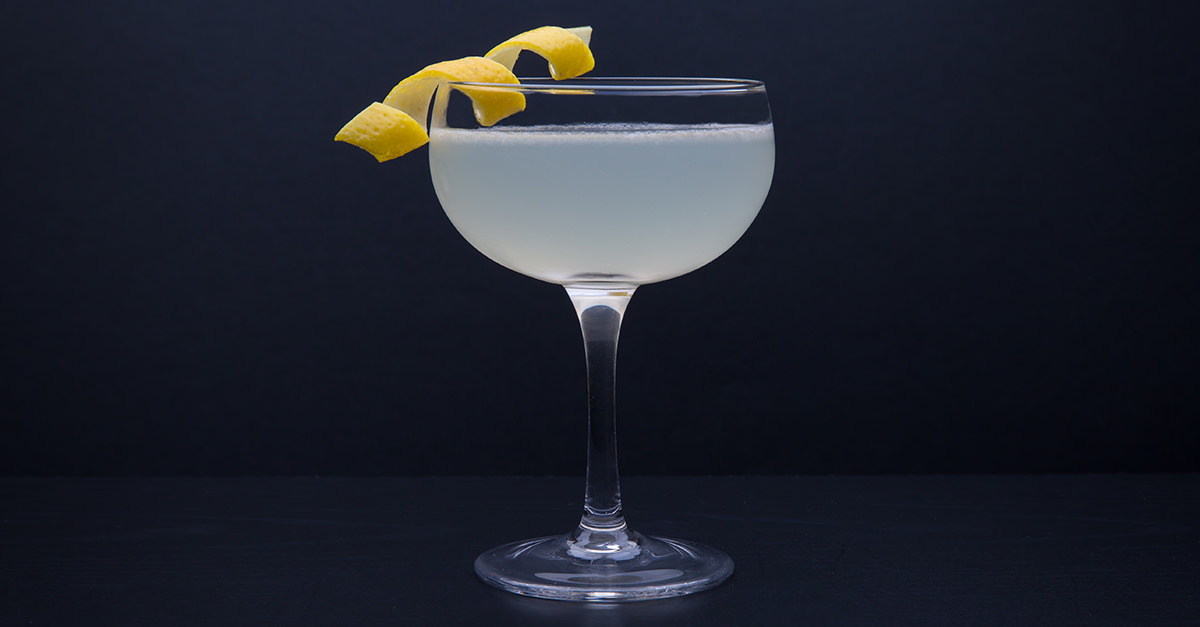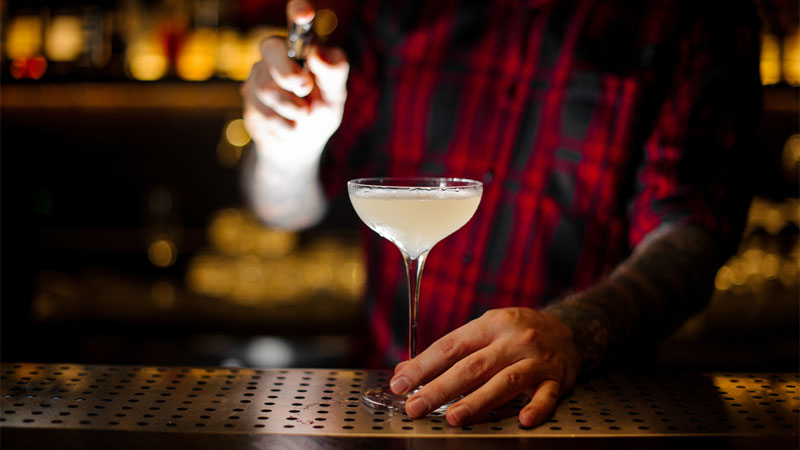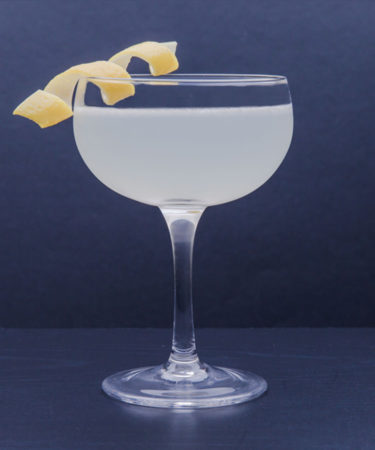The Corpse Revivers are a family of cocktails that are meant for the morning after — hair of the dog style. For those who have never had a Corpse Reviver #2, it’s time to get acquainted. The drink holds a spot on the list of the world’s 50 most popular cocktails. Now, read more about the other 49.
Table Of Contents
Corpse Reviver #2 Ingredients
- ¾ oz Gin
- ¾ oz Triple sec
- ¾ oz Lemon
- ¾ oz Lillet Blanc
- As needed absinthe
Corpse Reviver #2 Directions
- Combine all ingredients in shaker tin, excluding absinthe.
- Ice small shaker tin.
- Shake vigorously, until tin is frosted over.
- Strain into chilled cocktail glass rinsed with absinthe.
- Garnish with lemon twist and enjoy.
Rate This Recipe:
Yield: 1 Cocktail
Calories: 172
Updated: 2024-04-22

The Corpse Reviver No. 2 Has Supernatural Staying Power
Among the world’s most iconic cocktails is the Corpse Reviver No. 2, an intriguingly named creation drenched in staying power.
The first written recipe for the drink — which comprises an equal-parts mixture of gin, Kina Lillet, lemon juice, and Cointreau served in a chilled, absinthe-rinsed coupe — appears in Harry Craddock’s 1930 "Savoy Cocktail Book." Unlike most of the 750 or so other recipes in the book, which have either fallen by the wayside or been tweaked for modern palates, the Corpse Reviver No. 2 has stood the test of time, all but unchanged in almost a century of existence.
Its memorable name riffs on two quasi-related, millennia-spanning references. In the 19th century, a “corpse provider” was a facetious term for a physician, which tells us a lot about general consumer confidence for health care of the era. And during that time, a “corpse reviver” was slang for a hangover cure. The 1889 book, "A Dictionary of Slang, Jargon & Cant," defines “corpse-reviver” as “a dram of spirits” and includes an example of its usage in The Sporting Times, a now-defunct weekly British newspaper whose coverage closer resembled Page Six than Sports Illustrated: “There was a general rush for wet towels and corpse-revivers.”
A Corpse Reviver cocktail, meanwhile, was emerging and evolving right around this time. The first iteration, Corpse Reviver, with no numerals, debuted in the 1871 book, "The Gentleman’s Table Guide: Being Practical Recipes for Wine Cups, American Drinks, Punches, Cordials, Summer & Winter Beverages." Its recipe includes “Half [a] wine glass of brandy, half glass of Maraschino, and two dashes of Boker’s bitters.”
Antiquated measurements aside, the recipe is a recognizable predecessor of the modern-day Corpse Reviver No. 1, which was later popularized alongside the Corpse Reviver No. 2 in Craddock’s 1930 "Savoy Cocktail Book."
A riff on the Manhattan, Craddock’s Corpse Reviver No. 1 calls for equal parts Italian vermouth, apple brandy or Calvados, and brandy, “to be taken before 11 a.m., or whenever steam and energy are needed.”
As for the Corpse Reviver No. 2, Craddock humorously notes, “Four of these taken in swift succession will unrevive the corpse again.”

Though the two enumerated Corpse Revivers debuted at the same time, contemporary bartenders unanimously favor one over the other.
“Typically the go-to is the No. 2,” Marissa Mazzotta, beverage director at The Shanty in Brooklyn, tells VinePair. “I've probably made 20 Corpse Reviver No. 1s in my life and more than half of those I personally suggested someone to try.”
Mazzotta says the No. 1 should not be disregarded, as it offers flexibility for interpretation — whether that be customizing proportions or base spirits.
Erick Castro, co-founder of San Diego's Raised By Wolves and Polite Provisions, agrees: “Although I have a deep affection for the Corpse Reviver No. 2, I am a huge advocate of the oft-neglected No. 1,” he says. “The No. 1 is a very elegant and beautiful cocktail ... and always manages to hit the spot, especially if you jazz it up with a touch of bitters."
If adaptability is the main asset of the Corpse Reviver No. 1, then the opposite is true of the No. 2. “The way it is, is the way it’s supposed to be,” Mazzotta says. “Three quarters across the board, plus two dashes of absinthe — that’s killer.”
Bartender, journalist, and author Jim Meehan says the modern-day resurgence of the Corpse Reviver No. 2 owes much to the timely collision of a number of factors. “The renaissance of the Corpse Reviver [No. 2] came about at the same time of the renaissance of classic cocktails, which also occurred during the reintroduction of classic absinthe,” he says. Absinthe was banned in many countries around the world in 1912, including the U.S. The TTB legalized the spirit again in October 2007.
Meehan also credits its popularity to the “staying power” of the "Savoy Cocktail Book," a guide he describes as “unsurpassed” versus any other cocktail book of the 20th century, and the “endurance” of London dry gin and Lillet over time.
It should be noted that Lillet’s recipe has changed since Craddock’s recipe was published. In 1986, Lillet replaced the Kina variety called for in Craddock’s original recipe with Lillet Blanc. The former was more bitter than the modern-day Blanc, leading some bartenders to now opt instead for Cocchi Americano, or a split base of Cocchi and Lillet Blanc.
Over time, numerous other recipes bearing the Corpse Reviver name have been published. The 1937 "Café Royal Cocktail Book" features three different riffs: The first resembles a brandy-spiked Mimosa; the second is a toxic mix of vodka, gin, grenadine, and bitters; and the third, called the “New Corpse Reviver,” is all but indistinguishable from Craddock’s Corpse Reviver No. 1. As yet, no recipe has cemented itself as the Corpse Reviver No. 3.
For budding mixologists looking to take on that challenge, Meehan offers advice: “One thing I tell a lot of young bartenders is if you want your recipes to hang around longer than you do behind the bar, mix them with ingredients that are widely available all over the world and produced by companies that have great distribution.” An evocative name and a recipe that tastes just as good 90 years down the line probably won’t hurt either.
